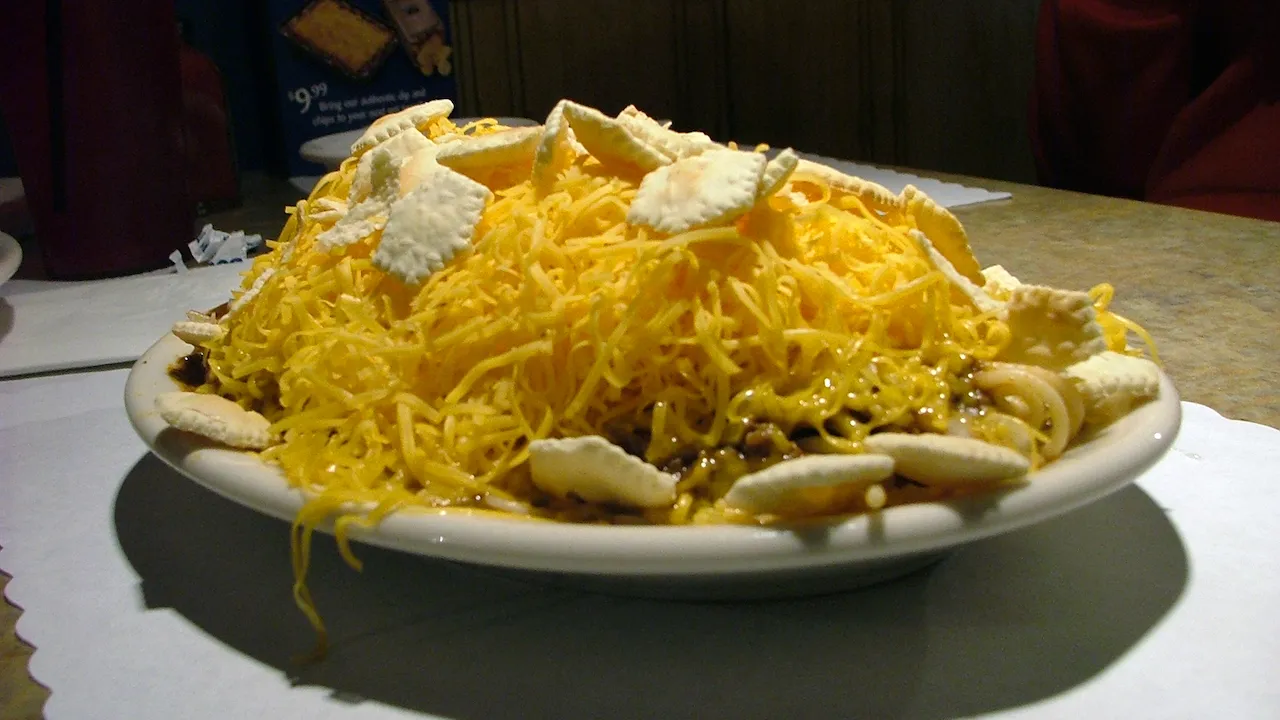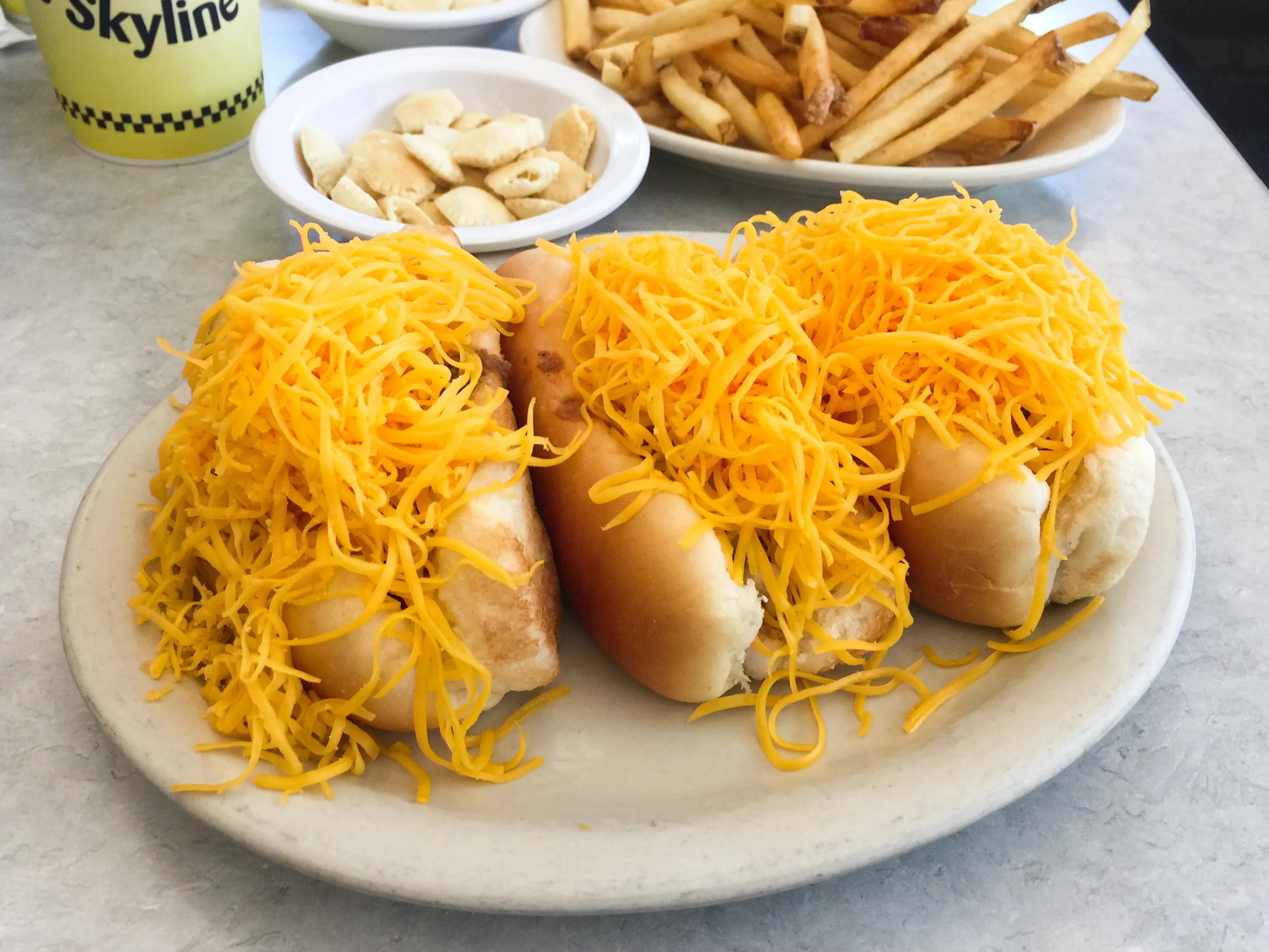On Cincinnati-Style Chili
Wednesday February 01, 2023


Children’s sporting events have three types of parent attendees. Some are pushers. They push their children to achieve more and perform. Kick further, steal the base, or hit the three-pointer. Others are the organizers. They keep the events running and, thankfully for the rest of us, usually succeed.
The third type of parent is just there and trying to get something else done in between at-bats and volleys. It’s not that we don’t care. We’ll celebrate our children’s wins and hug them when they lose. But we go to a lot of these things, and they all have a lot of downtime. And there’s nothing like the downtime at a chess tournament.
The youngest kids play five half-hour matches over five or six hours. Since the kids only play for about half that time, they spend a lot of it running around. A bunch play chess against each other for practice. Others hit the basketball courts. Some grab a snack. Regardless of what type of parent you are, you’ve self-segregated by school. Even among the chess parents, the class differences are clear among the private schools, the parochial schools, and the good public schools. The bad public schools aren’t even represented.
One mother turns and asks me if I have any good recipes. I wasn’t sure what she meant, so I asked. She said, “My church is putting together a recipe book for the members. Do you have anything I can add?” I usually don’t keep recipes on hand. I have to look at the chocolate chip cookie recipe on the bag of the chip bag every time.
There’s only one recipe I ever wrote down: Cincinnati-style chili. This recipe was given to me by my mother. But she wasn’t from Cincinnati, and she learned it from my father, who was. And he learned it from his mother. And I am pretty sure she stole it from a friend in the mid-1960s. My family is not one to stand for tradition.
Most people think of Cincinnati-style chili as the funny chili that has chocolate in it. Or the weird chili served over spaghetti noodles. When made correctly, there is no chocolate in Cincinnati-style chili, but it is served over spaghetti. But that’s just the beginning.
Cincinnati was founded in the late 1700s and saw successive waves of immigrants from Germany, Greece, and then Russia. But Cincinnati isn’t a coastal city and these immigrants came through New York. And along came native New Yorkers, and at one point, Cincinnati was the second largest city in America. She earned the nickname the Queen City. These immigration patterns left a mark and in the city proper, the accent sounds like you’re sitting in Manhattan. Just outside the city, the slow drawl of the southern midland accent wraps R’s into wash and the Northern Cities shift continues moving vowels out of place.
Some of the Greek immigrants created a Greek-style beef stew with ground beef and Mediterranean spices. Cumin, cinnamon, and allspice, but no chocolate. Tom and John Kiradjieff, two of these immigrants, sold the stew as a topping for hot dogs. The Kiradjieff brothers created the Empress restaurant, the first of a series of chili parlors throughout the region. They put the chili on top of spaghetti, learned from Italian immigrants they had met in New York.
This chili came to be served via the way-system. You can get a three-way, with spaghetti, chili, and finely shredded cheddar cheese. Starting with a mild cheddar, one that holds up to small cuts, instead of crumbling, is grated with a narrow grater. The cheese is left light and nearly fluffy in its consistency, and it melts quickly with even modest heat of the chili on the plate.
You can also get a four-way, which includes a finely diced white onion between the chili and cheese. Some will claim you can put in kidney beans, but a purist will tell you a four-way is onion. Then there’s a five-way, which includes both the onions and the beans. Whichever way you go, dropping a handful of oyster crackers on top finishes it off.
Someone probably left hot sauce on the table, too, and it was likely Tabasco. Some will add this on top of the cheese. But when the server came to take your order, he probably brought over the oyster crackers then. Oyster crackers, commercially and bulk produced, are hexagonally shaped, complete with perforations for breaking apart still present. These are the same oyster crackers seen up and down the East Coast. The side up in the oven probably puffed up and broke open. So while you’re waiting for the chili, you drop some Tabasco inside the cracker and pop it. The kids call it cracker bomb, but it’s just hot sauce for the sake of hot sauce.

You can usually get a coney. It’s a short hotdog on a short bun. The hotdog, like everything else, has been cooking all day and will arrive within five minutes of ordering. The short bun, though, has been steamed, leaving it warm and soft, and a thin layer of mustard is added before the hotdog. The diced onion can be added here, too, and the cheddar tops it off. If you let it sit for more than a couple of minutes, you’re better off eating it with a fork.
The chili itself has a lot of water. It’s not greasy, as some suggest, just runny. It is pulled out of the pot with a slotted spoon, but that can only do so much. The water collects at the bottom of the dish with the spaghetti. That’s the advantage of the finely grated cheddar and crackers. Everything absorbs at the end into a nice dense casserole, allowing you to clean the plate.
More Greek immigrants started chili parlors. In 1949, Nicholas Lambrinides started Skyline Chili. In the 1960s, some Jordanian immigrants started Gold Star Chili. Skyline and Gold Star dominate the market in the Cincinnati region now. Empress is long gone. Smaller boutique and family-based chili parlors continue to open in and around Cincinnati, adding their own flare to the tradition, one of them a rehashing of Empress.
It is a simple dish that is affordable and easy to obtain, making it a popular choice for those who are looking for a quick and filling meal. The dish is known for its unique flavor profile, which includes a blend of spices and seasonings that are combined with ground beef to create a hearty, savory sauce.
Cincinnati-style chili is a classic example of peasant food, the kind of traditional dishes that are simple, hearty, and made from easily accessible and inexpensive ingredients. These dishes were typically created by rural populations, who often had limited resources and access to fresh produce. As a result, peasant food often relied on staples such as grains, beans, and root vegetables, which could be stored for long periods of time and were relatively cheap.
Peasant food was, and in some cases still is, an important part of the diet in many cultures around the world. In Europe, for example, dishes such as stews, soups, and porridges were staple meals for rural communities. In Latin America, beans and corn have long been the foundation of peasant cuisine, while in Asia, rice and noodles have played a similar role. We see these themes in many regional foods across the United States.
Despite its simplicity, Cincinnati-style chili is a satisfying meal that can be enjoyed on its own or served over a bed of spaghetti. One of the defining characteristics of this dish is its lack of real vegetables, which sets it apart from other types of chili. However, this does not detract from its overall appeal, as the flavors of the beef and spices are enough to satisfy even the most discerning of palates.
Despite its humble origins, peasant food has a timeless appeal, and many traditional dishes have found their way into the mainstream. Today, peasant food is often celebrated as a symbol of comfort and authenticity, and has inspired many modern chefs to reinterpret these classic recipes using fresh and seasonal ingredients.
My friends know the highest honor I can give them is making them chili. And my friends add their own flare. One replaced the cheddar with crumbled feta, leading to a crisis of authenticity. After all, it is Greek, so why not add feta. I’ve even made it quite successfully with meat substitutes for vegetarians, and depending on which meat substitute you use, it may be indistinguishable from the real thing. You can even get it in a can, produced by Skyline or Gold Star at grocers around the country.
After a century in Cincinnati, it has become the distinguishing food of the town. It is just like Philadelphia’s cheesesteaks, Montréal’s poutine, and Boston’s lobster roll. It defines the town and is the first thing you do when you get there. It’s also one outsiders do not always get. And that is okay, too. But there is never any chocolate in it.

Images via TheDapperDan / Wikimedia Commons and Navi75 / Flickr.